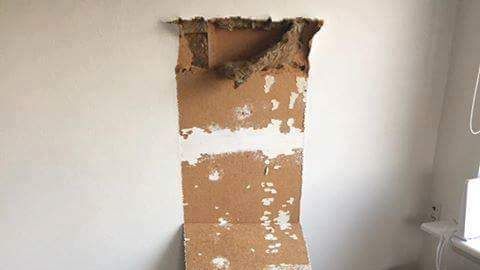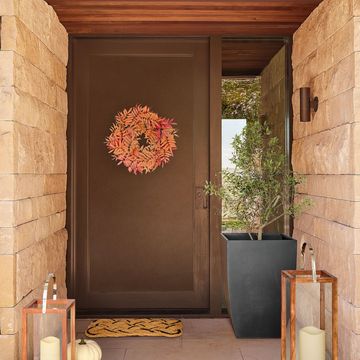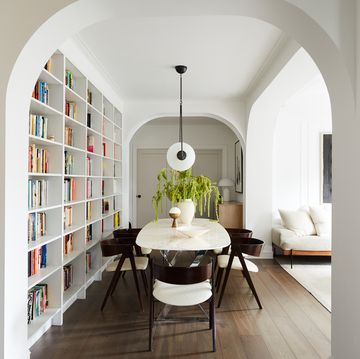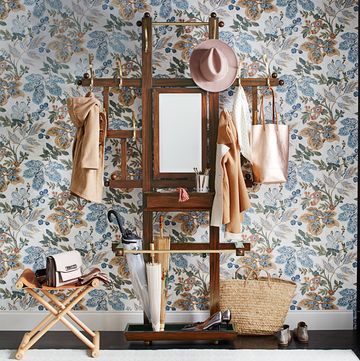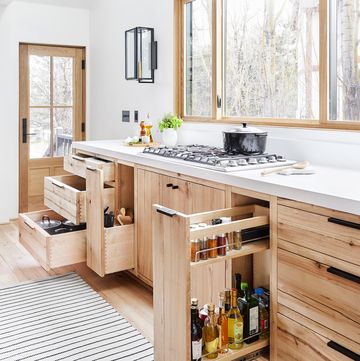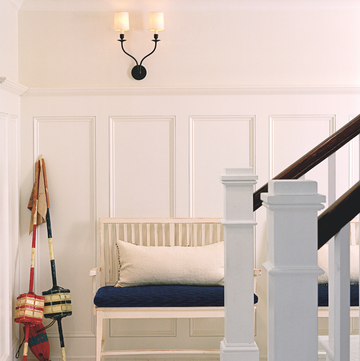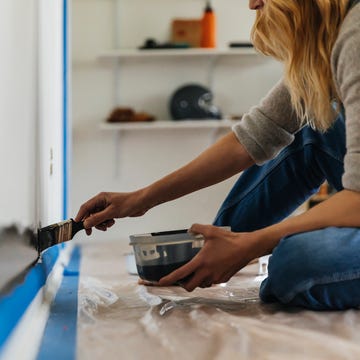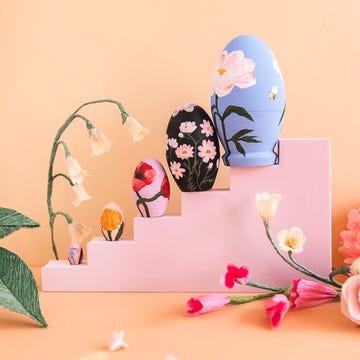When you move into a new place, it makes sense that you want to personalize it ASAP by hanging art, mounting a TV on the wall, and if you have kids anchoring furniture to the wall for safety. All of these tasks require drilling into a stud in the wall. The stud is simply a vertical two-by-four beam in the wall for structural support. And if you lost your stud finder in the moving boxes or simply don’t have one to begin with, these hacks will help. Below, we rounded up the DIY stud-finding techniques that everyone is obsessed with on TikTok. They’re so simple that you can hang anything in no time worry-free.
Why Do I Need to Find a Stud in My Wall?
Most homes have drywall, which can only support lightweight items. Even with drywall anchors, drywall can't always handle the weight of what you're handing, especially in a room with heavy foot traffic. More importantly, from a safety perspective, any large piece of art or electronics needs extra support, and a stud will provide it. Studs, the vertical beams that support your home, also give your screws a tighter grip to secure heavy objects. Basically, we want you to avoid being the latest TikTok video of a broken TV on the floor because you mounted it incorrectly.
Option One: Use a String and Magnet
An easy method that's getting a lot of views on TikTok is finding a stud with two household items: a magnet and a piece of string. Start by measuring about four feet from the floor—you will generally find studs around this height. Tape or tie the magnet to the string and gently run it along the four-foot-heigh mark, keeping the magnet about a half-inch away from the wall. The magnet will cling to a stud's screw or nailhead inside the wall. Mark these magnetic spots as a guide to hanging your item. Remember, the studs run vertically, so you can hang artwork lower or higher, but you need to drill into the stud. They're usually about 16 inches apart on the wall.
Option Two: Knock on the Wall
“The easiest way to find a stud is to basically just knock on the wall,” explains Mike Patterson, construction director at Marmol Radziner. He adds: “Where it sounds hollow, there is no stud. Where it sounds solid, there is a stud.”
If you’re not too confident in your ability to judge hollow versus solid wall sounds, or you simply want extra confirmation, there are a few other ways you can locate a stud.
Option Three: Use Windows and Doors as Guides
Studs are typically 16 inches apart from each other. There are always studs on either side of a window or door, so you can measure 16 inches from the edge to get general guidance on where the next stud is located in the room. Pair this method with the knock test, and you’ll have a pretty good idea of where the studs are located.
Option Four: Focus on Light Switches and Outlets
Electrical boxes for switches or outlets are often attached to a stud on one side. Knock to determine which side of the switch or outlet the stud is on, and use that 16-inch stud spacing method to guide you.
Option Five: Drill a Hole
Once you’ve used a few non-invasive methods to determine where a stud is, the easiest way to confirm it is by drilling a hole in your wall. If you start to feel some tension, you know you’ve hit a wood stud.
Option Six: Try a Stud Finder App
Yes, stud finder apps exist! They’re ideal if you don’t have a physical stud finder at home or don’t want to invest in one. The apps use a magnetometer to measure the magnetic field when your phone is placed near metal objects. The only caveat is that they will sometimes detect other objects that aren’t wood studs, like nails and electrical wiring. Many reviewers confirm they do work pretty effectively for stud-finding purposes.
Once you've determined a stud in the best spot for hanging your art or technology, there are plenty of hanging tools you can use to actually get your item on the wall. French cleats are a no-fail solution that you can drill into and hang art from. And if you're not so sure what you want to hang just yet, we have you covered with some genius ideas. In any case, you'll have your walls adorned in no time!
Want to know absolutely everything before starting your reno project? We get it. Let’s obsess over the details together.
Follow House Beautiful on Instagram.

Kelly Allen is the current Associate Editor at House Beautiful, where she covers design, pop culture, and travel for digital and the print magazine. She’s been with the team for nearly three years, attending industry events and covering a range of topics. When she’s not watching every new TV show and movie, she’s browsing vintage home stores, admiring hotel interiors, and wandering around New York City. She previously worked for Delish and Cosmopolitan. Follow her on Instagram.

Angela Belt is the contributing Assistant Shopping Editor at House Beautiful. She's also an interior designer and is the host of her own podcast, The Mood Board. When it comes to design, she's an esteemed expert with some of her work also appearing in HGTV, Better Homes & Gardens, The Washington Post, and more.
